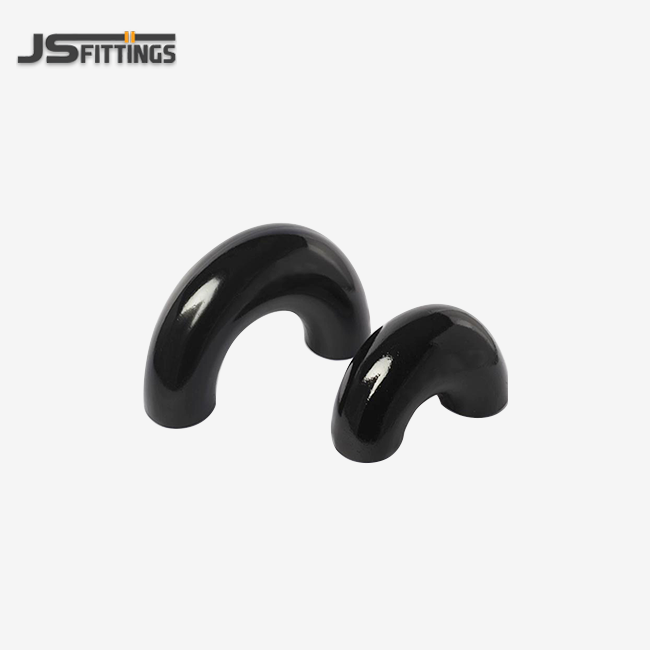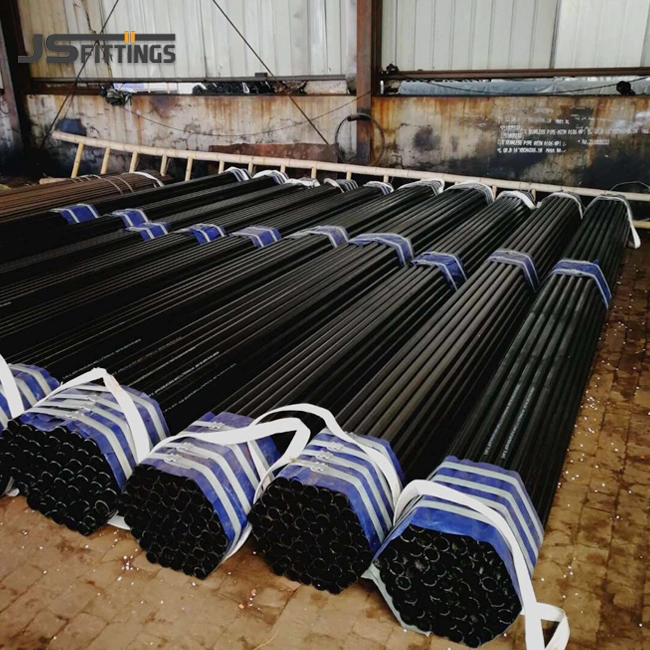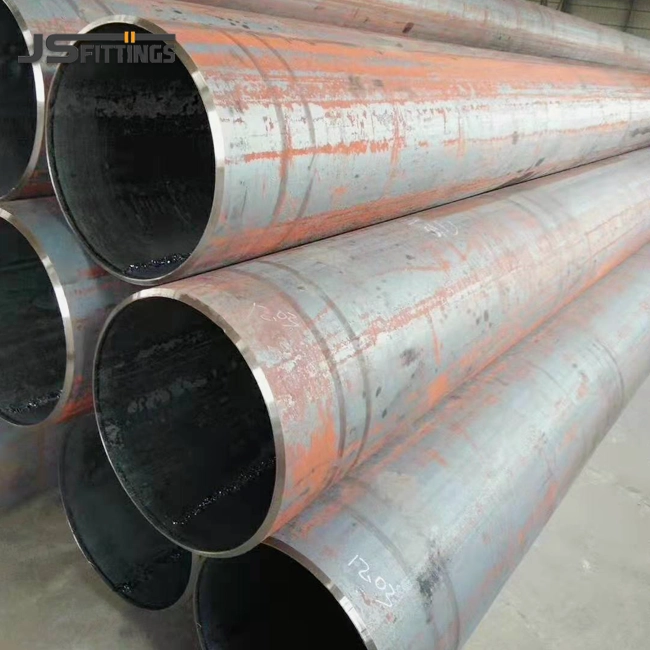A weld neck pipe flange represents one of the most reliable pipe fitting solutions in industrial piping systems. This specialized flange features a tapered hub that seamlessly connects to pipes through butt weld attachment. Industries across the United States rely on these robust components for high-pressure applications, chemical processing, and critical infrastructure projects. Their exceptional strength and leak-proof design make them indispensable for maintaining operational safety and system integrity in demanding environments.

Understanding Weld Neck Flanges: Definition and Core Positioning
A weld neck flange stands as the premium choice among flange connections in industrial piping systems. The distinctive tapered hub design gradually transitions from the flange face to match the pipe's outer diameter. This engineering approach creates a smooth bore that eliminates turbulence and reduces stress concentrations at the pipe joint.
The fundamental structure consists of three main components: the flange face for gasket seal placement, the tapered neck section, and the welding end that matches pipe dimensions. Manufacturing typically involves forging processes using carbon steel, stainless steel, or specialized alloy materials. ANSI standards govern the precise flange dimensions, bolt circle specifications, and pressure ratings.
Unlike other flange types, the weld neck design provides superior mechanical properties through its gradual thickness transition. The tapered geometry distributes loads evenly across the pipe joint, preventing stress concentration that could lead to premature failure. This makes them particularly valuable for high-pressure applications where safety remains paramount.
Quality manufacturers ensure consistent flange thickness and precise machining tolerances. The bolt holes maintain exact spacing according to ANSI standards, guaranteeing proper alignment with mating flanges. Surface finish requirements on the flange face enable reliable gasket sealing under various operating conditions.
Critical Problems Solved by Weld Neck Flanges
Industrial facilities face numerous challenges with pipe connections that weld neck pipe flanges effectively address. Pressure containment represents the primary concern, especially in chemical processing plants and power generation facilities. Traditional threaded connections often fail under cyclic loading, while socket weld fittings may develop crevice corrosion in corrosive environments.
The seamless bore design eliminates dead spaces where contaminants could accumulate. This feature proves crucial in pharmaceutical manufacturing and food processing applications where sanitary conditions must be maintained. The smooth internal profile also reduces pressure drop across the connection, improving overall system efficiency.
Thermal expansion and contraction create significant stress in piping systems. The gradual taper of weld neck flanges accommodates these thermal movements without concentrating stress at sharp transitions. This capability extends system life and reduces maintenance requirements in facilities with temperature fluctuations.
Maintenance accessibility becomes critical in industrial environments. These flanges allow complete disassembly of pipe sections for inspection, cleaning, or equipment replacement without cutting pipes. This feature significantly reduces downtime costs compared to permanent welded connections throughout the entire system.
Core Features and Functionality Deep Dive
The tapered hub represents the most distinctive feature of weld neck flanges. This gradual transition typically follows a 7-degree angle that optimally distributes mechanical stress. The taper extends from the full flange thickness down to match the pipe wall thickness at the welding end. This design eliminates the abrupt thickness changes that create stress concentration points in other flange types.
Flange face configurations accommodate various sealing requirements. Raised face designs work well with standard gaskets in moderate pressure applications. Ring type joint faces handle extreme pressure conditions by using metal ring gaskets that create metal-to-metal seals. Flat face configurations suit lower pressure systems with full-face gaskets.
Bore matching ensures optimal flow characteristics through the pipe joint. The internal diameter matches the pipe's inside dimension precisely, creating a smooth flow path. This feature becomes particularly important in applications where pressure drop must be minimized or where particle buildup could cause operational problems.
Bolt circle patterns follow standardized dimensions that ensure compatibility across manufacturers. The bolt holes incorporate proper spacing and sizing to accommodate standard bolting materials. Proper bolt installation creates uniform compression on gasket seals while maintaining structural integrity under operating loads.
Material selection options address diverse application requirements. Carbon steel provides cost-effective solutions for general industrial services. Stainless steel grades offer corrosion resistance for chemical processing environments. Specialty alloys handle extreme temperatures or highly corrosive conditions where standard materials would fail.
Technical Engineering Behind Superior Performance
The engineering principles underlying weld neck flange performance involve sophisticated stress analysis and metallurgical considerations. Finite element analysis reveals how the tapered geometry distributes loads throughout the connection. The gradual thickness transition creates a stress distribution that approaches the uniform stress pattern of seamless pipe.
Welding metallurgy plays a crucial role in joint performance. The butt weld configuration allows complete penetration welding that creates a homogeneous metal structure across the joint. Proper welding procedures ensure the heat-affected zone maintains adequate mechanical properties. Post-weld heat treatment may be required for certain materials to optimize microstructure and relieve residual stresses.
Pressure calculations involve complex analysis of the flange components under internal pressure loading. The hub experiences both radial and longitudinal stresses that must remain within acceptable limits. ASME Boiler and Pressure Vessel Code provides the analytical framework for determining safe operating pressures based on material properties and geometric factors.
Flow dynamics benefit from the smooth internal profile that eliminates turbulence at the connection. Computational fluid dynamics studies show minimal pressure loss across properly designed weld neck connections. This characteristic becomes especially valuable in pumping systems where energy efficiency directly impacts operating costs.
Key Advantages That Drive Industry Adoption
Structural integrity represents the foremost advantage driving widespread adoption of weld neck pipe flange. The continuous metal path from pipe to flange eliminates potential failure points that exist in threaded or socket weld connections. This reliability proves essential in critical applications where leakage could result in safety hazards or environmental damage.
Pressure handling capabilities exceed other flange types due to the reinforced hub design. The gradual taper effectively strengthens the pipe-to-flange transition, allowing higher pressure ratings than slip-on or socket weld alternatives. This advantage enables system designers to specify fewer pressure classes while maintaining safety margins.
Fatigue resistance excels under cyclic loading conditions common in industrial applications. The stress distribution characteristics prevent crack initiation at geometric discontinuities. Long-term testing demonstrates superior performance under pressure cycling, thermal cycling, and vibration loading compared to other connection methods.
Installation flexibility accommodates various pipe positioning requirements during construction. The separate flange and pipe components allow precise alignment before final welding. This flexibility reduces field modification requirements and speeds installation in congested piping arrangements.
Leak-tight performance under extreme conditions makes these flanges suitable for hazardous service applications. The robust gasket sealing surfaces maintain integrity even under thermal cycling or mechanical vibration. This reliability reduces fugitive emissions and helps facilities meet environmental compliance requirements.
Comparative Analysis: Weld Neck vs. Alternative Solutions
Slip-on flanges offer lower initial cost and simpler installation but sacrifice structural performance. The fillet weld attachment creates stress concentration points that limit pressure ratings and fatigue life. Flow turbulence at the pipe-to-flange transition increases pressure drop and creates potential erosion points. While suitable for moderate pressure applications, slip-on flanges cannot match the reliability required for critical services.
Socket weld flanges provide moderate strength improvement over slip-on designs but retain inherent limitations. The socket creates a crevice where corrosive media can accumulate, leading to premature failure in certain environments. The fillet weld attachment still creates stress concentration compared to the continuous metal path of weld neck designs. Internal shoulders in socket connections can trap debris or create turbulence in flowing systems.
Threaded flanges offer installation simplicity but severely limit pressure handling capabilities. Thread engagement provides limited structural strength compared to welded connections. Thermal cycling can loosen threaded connections over time, creating maintenance requirements and potential leak paths. The thread relief groove creates stress concentration that further reduces pressure capacity.
Blind flanges serve different applications but highlight the versatility of the weld neck hub design. When pressure containment is critical, blind weld neck flanges offer superior performance compared to flat plate designs. The tapered hub in the weld neck pipe flange distributes pressure loads more effectively, allowing for higher pressure ratings, making them ideal for vessel closure applications.

Target Applications and Ideal Use Cases
High-pressure steam systems in power generation facilities rely extensively on weld neck flanges for reliable performance. The combination of high pressure and temperature creates demanding conditions where connection integrity becomes critical. The superior fatigue resistance handles thermal cycling from startup and shutdown operations while maintaining leak-tight sealing.
Chemical processing plants utilize these flanges for corrosive media handling where leak prevention is paramount. The smooth bore design prevents crevice corrosion that could compromise system integrity. Material options including duplex stainless steel and nickel alloys provide corrosion resistance for aggressive chemicals.
Offshore oil and gas platforms depend on weld neck flanges for subsea applications where maintenance access is severely limited. The enhanced reliability reduces the need for expensive intervention operations. Qualification testing to industry standards ensures performance under extreme environmental conditions including pressure cycling and vibration.
Pharmaceutical manufacturing requires sanitary piping systems where contamination must be eliminated. The crevice-free design prevents bacterial growth and simplifies cleaning procedures. Electropolished stainless steel surfaces meet stringent hygiene requirements while maintaining structural integrity.
Municipal water treatment facilities employ these flanges for large diameter piping where reliability directly impacts public safety. The ability to handle high pressures enables efficient pumping systems while minimizing environmental risks from potential leakage.
Conclusion
Weld neck pipe flanges represent the premium solution for critical piping applications where reliability, pressure capability, and long-term performance are essential. The tapered hub design provides superior stress distribution and structural integrity compared to alternative flange types. While initial costs may be higher, the enhanced reliability and reduced maintenance requirements deliver excellent value over the component lifecycle. Industries ranging from chemical processing to power generation depend on these robust connections for safe, efficient operations. Selecting quality products from experienced manufacturers ensures optimal performance and compliance with applicable codes and standards.
FAQ
Q1: What pressure ratings are available for weld neck flanges?
A: Weld neck flanges are available in ANSI pressure classes ranging from 150 to 2500, with some specialty applications extending to higher ratings. The specific pressure rating depends on material selection, temperature conditions, and flange dimensions. Carbon steel flanges typically handle pressures up to 6,170 psi at room temperature for Class 2500 ratings, while stainless steel versions may have different pressure-temperature relationships based on the specific alloy grade.
Q2: How do I determine the correct flange dimensions for my piping system?
A: Flange dimensions follow standardized specifications outlined in ASME B16.5 for sizes up to 24 inches. Key measurements include pipe size, pressure class, bolt circle diameter, and flange thickness. The bolt pattern and gasket sealing surface must match the mating flange exactly. Professional engineering support can help verify compatibility and ensure proper selection for specific operating conditions and code requirements.
Q3: What welding procedures are required for proper installation?
A: Weld neck flange installation requires qualified welders following approved procedures for the specific materials involved. The butt weld joint demands complete penetration welding with appropriate preheating and interpass temperature control. Post-weld heat treatment may be necessary depending on material thickness and service conditions. Nondestructive examination such as radiography or ultrasonics verifies weld quality and code compliance.
Partner with JS FITTINGS for Premium Weld Neck Pipe Flange Solutions
Reliable weld neck pipe flange manufacturer partnerships form the foundation of successful industrial projects. JS FITTINGS brings over 40 years of manufacturing expertise to deliver consistently high-quality products that meet the most demanding specifications. Our advanced production capabilities include four specialized manufacturing lines equipped with modern forging and machining equipment.
Quality certifications including ISO 9001, CE, and GOST-R demonstrate our commitment to international standards and continuous improvement. These credentials provide assurance that every flange meets stringent quality requirements essential for critical applications. Comprehensive material testing and dimensional verification ensure compliance with ASME, ANSI, and other applicable codes.
Competitive pricing strategies help control project budgets without compromising performance or reliability. Our efficient manufacturing processes and strategic material sourcing enable cost-effective solutions that support your bottom line. Stable supply capabilities ensure on-time delivery to meet project schedules and avoid costly delays.
Technical support services include application engineering assistance to select optimal flange configurations for specific requirements. Our experienced team can provide recommendations on material selection, pressure ratings, and installation procedures. This expertise helps minimize project risks while ensuring optimal long-term performance.
Global supply chain capabilities serve customers across diverse industries and geographic regions. Established relationships with clients in the Middle East, South America, Europe, and Asia demonstrate our ability to meet international requirements and logistics challenges. Whether you need standard configurations or custom specifications, contact us admin@chinajsgj.com to discuss how JS FITTINGS can support your next project with superior weld neck pipe flange solutions.
References
1. American Society of Mechanical Engineers. "ASME B16.5 Pipe Flanges and Flanged Fittings: NPS 1/2 through NPS 24." New York: ASME Press, 2020.
2. Bickford, John H. "Gaskets and Gasketed Joints, Second Edition." CRC Press, 2016.
3. Escoe, A. Keith. "Piping and Pipeline Assessment Guide." Gulf Professional Publishing, 2006.
4. Nayyar, Mohinder L. "Piping Handbook, Eighth Edition." McGraw-Hill Professional, 2019.
5. Singh, Karan. "Industrial Piping and Equipment Estimation Manual." Gulf Professional Publishing, 2002.
6. Towler, Gavin and Ray Sinnott. "Chemical Engineering Design: Principles, Practice and Economics of Plant and Process Design." Butterworth-Heinemann, 2012.



